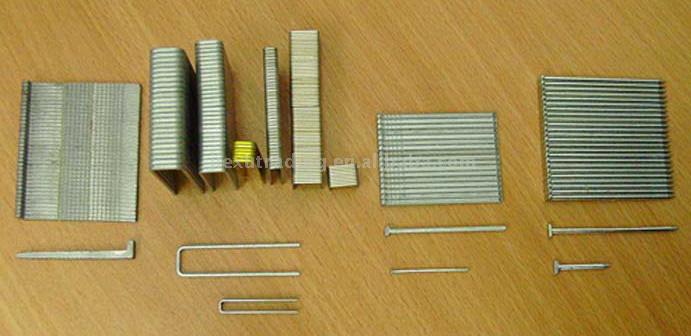With high-quality materials available at affordable prices and increasing labor rates due to lack of experienced craftsmanship. Think you can take on this project yourself? Finding the optimum fastener can be confusing. Some hardwood flooring installers insist on using traditional cleats, while others only use staples to secure solid hardwood. DIY enthusiasts want to know which choice is best in the cleats vs staples argument.
Pros and Cons of Using Cleats for Hardwood Floor Installation
Hardwood flooring installers have used cleats for generations, nailing 3/4” solid hardwood planks to a wooden subfloor with 2” nails formed with an “L-shaped” head. Installation requires a nailer and mallet, and those with some experience can install about 300 square feet in an 8-hour day. This type of hardwood flooring fastener works well with thicker profiles and species with a high Janka hardness rating such as Tigerwood, Cumaru, or Amendoim. The nail design allows for smooth insertion, and a longer shank penetrates deeply into the subfloor. Most experts agree that cleats allow for greater movement in areas with high humidity, meaning your hardwood flooring will look better longer. Cleats are around the same price as flooring staples but have less availability. You may have more trouble finding a cleat nailer to rent, and using cleat nails extends the installation time by nearly 50 percent. Adapters are required when nailing hardwood flooring planks less than 3/4″ thick.
Pros and Cons of Using Staples for Hardwood Floor Installation
Staples are familiar to DIY fans, and building box stores often push this method of installation. Using a pneumatic tool, staples are used to secure hardwood flooring to a plywood subfloor. Staples allows an experienced installer to put in about 500 square feet of flooring in an 8-hour day. Staples are affordable, easy to load, and widely available at any building material retailer. Pneumatic staplers are also reasonably priced and can be rented at a daily rate. Big-name manufacturers offer both 1 1/2″ and 2” staples; choose a size based on the thickness of your flooring. Engineered flooring lends itself especially well to staples, with a thinner profile and more advanced structure. Some installers claim that cleats create a tighter fit than staples. When swelling occurs due to high humidity levels, a tight fit lessens the risk of gaps and warping. Staples may not work well with harder wood species, resulting in marred surfaces, cracking, and splits around the fastener.
Cleats Vs Staples
Be sure to factor in every detail of the project when deciding between cleats vs staples. What type of hardwood flooring are you installing? What are the thickness and Janka hardness ratings? Cleats provide a better fit with thicker, harder types. Do you have the tools necessary for installation or will you need to rent or buy a nailer or stapler? How much time do you have available for installation? If time is short and you need to find an affordable tool fast, staples may be your best bet. Hardwood flooring installers disagree on which is better—cleats vs staples. Think about the details of your project before you decide and remember, if in doubt hire a pro.

